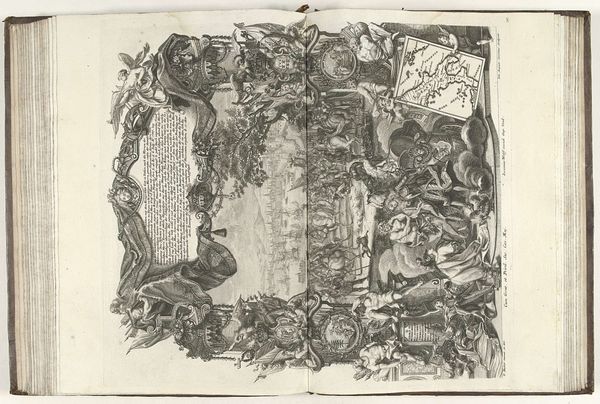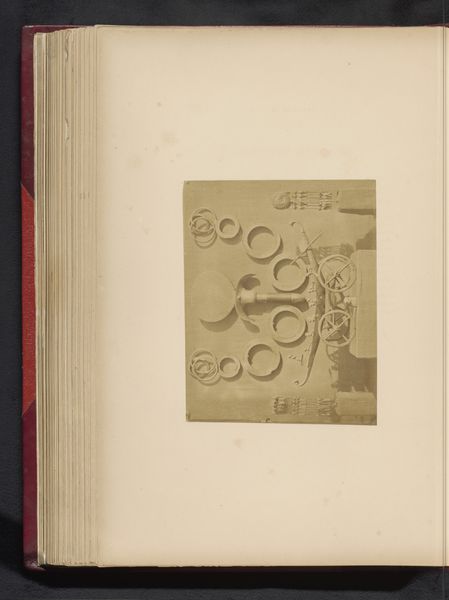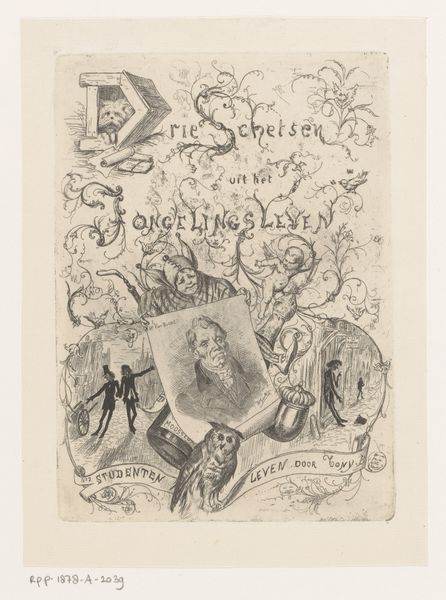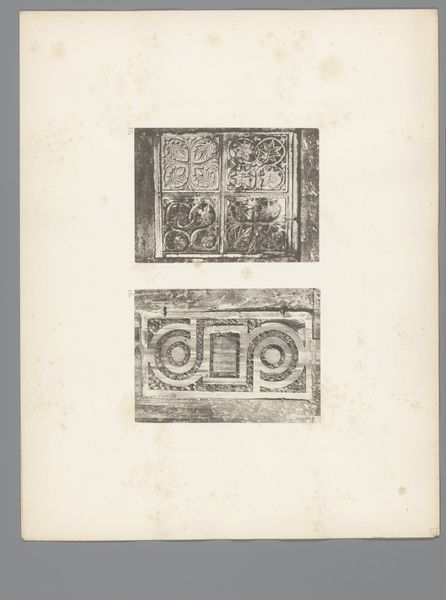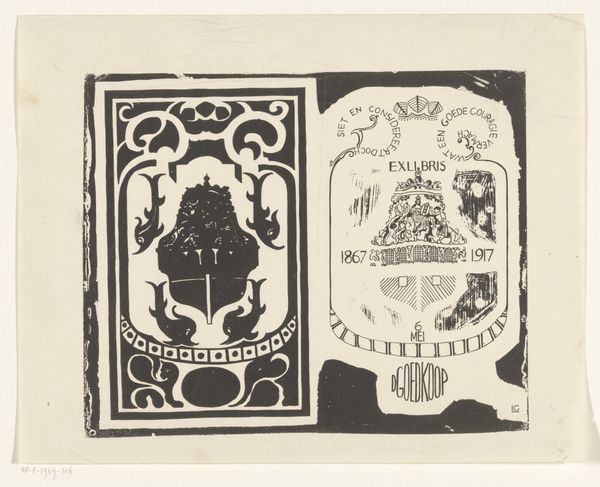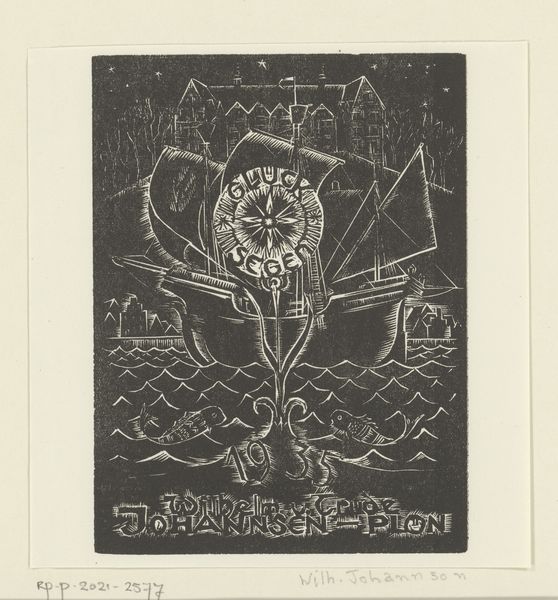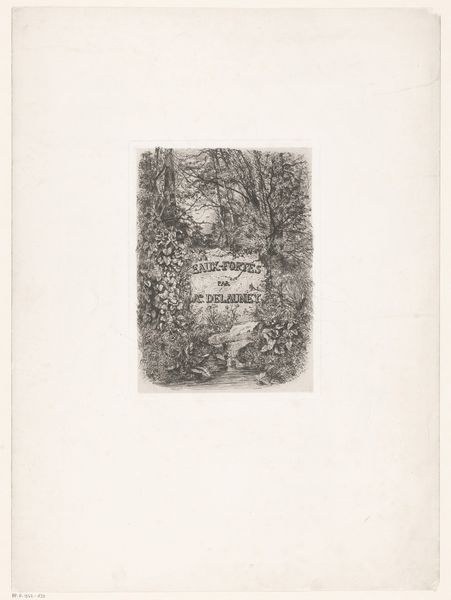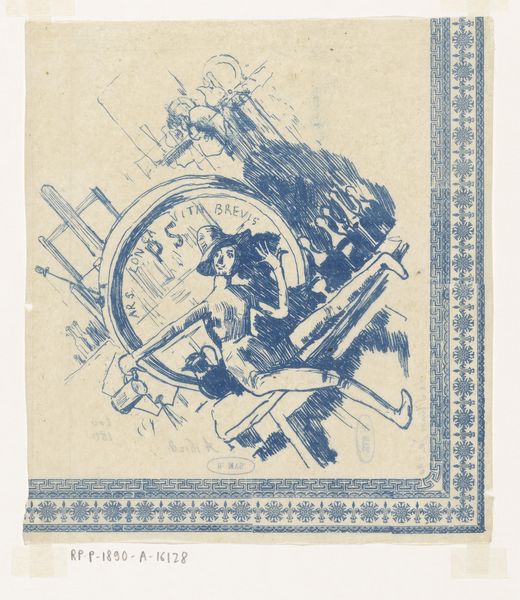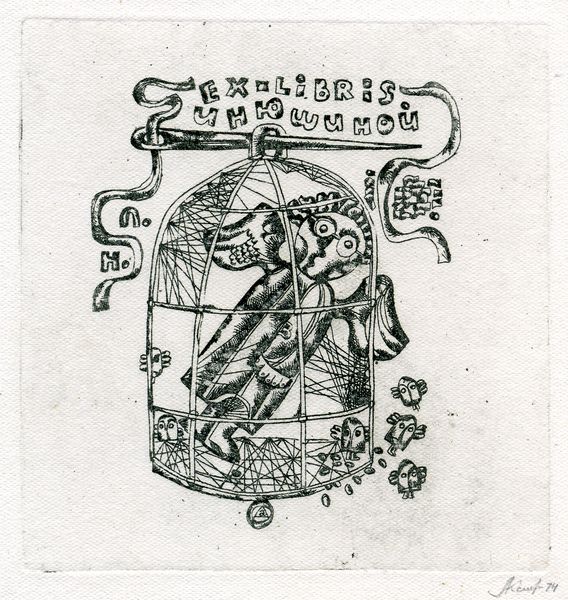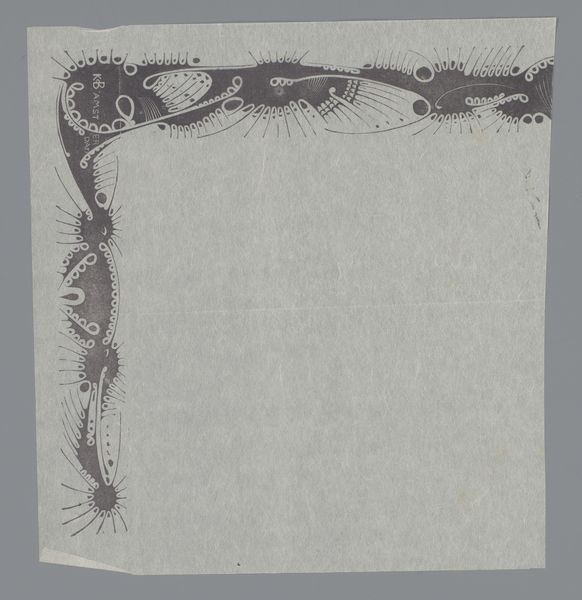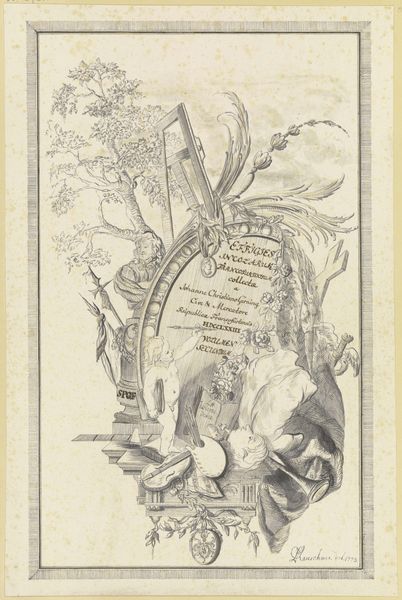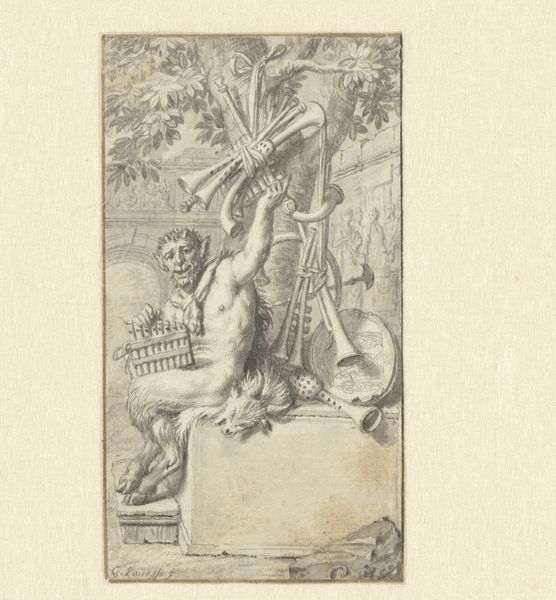
print, engraving
# print
#
figuration
#
romanticism
#
engraving
Dimensions: height 500 mm, width 327 mm, height 500 mm, width 654 mm
Copyright: Rijks Museum: Open Domain
Curator: Looking at this print, “Omslag voor: Faust,” or “Cover for: Faust,” by Eugène Delacroix from 1828, currently housed at the Rijksmuseum, I’m immediately struck by its densely packed composition. Editor: Yes, there’s an intense concentration of imagery! Almost claustrophobic, yet simultaneously enticing. The dramatic chiaroscuro contributes greatly to the mood. Curator: Absolutely. Delacroix has crafted this as an engraving, which lends itself to the graphic intensity. Notice how he structures the whole composition around this ornate frame featuring symbolic elements. There's an owl perched above the title scroll, skeletons reaching upward and peering figures surrounding a profile portrait medallion. The theatrical architecture suggests both containment and revelation. Editor: Fascinating! How would you interpret this in terms of the cultural and artistic currents of the era? Did Delacroix intend to comment on societal expectations about the publication? Curator: This piece aligns neatly within the Romantic movement. The subject, Faust, with its themes of forbidden knowledge, morality, and the sublime, perfectly resonated with Romantic artists. As a book cover, it functioned to attract readership. We should note that illustrated books and printed illustrations became popular for audiences from broader socio-economic spheres. Editor: And given the era’s obsession with classicism and the Gothic, the contrast is fascinating. The profile medallion seems directly pulled from classical conventions. Yet juxtaposed against macabre figures like the skeletons, one feels pulled into both past and future – creating a rather complicated image of Goethe. Curator: The artist juxtaposes order and chaos quite beautifully, as the symmetrical architecture lends weight to the disturbing themes of death. This piece seems to say a great deal about art as commerce – the need for both order and sensation in promoting intellectual thought. Editor: That’s a critical observation; the convergence of those elements makes this piece much more compelling than initially appears. Delacroix transforms this engraving into an intellectually stimulating piece about image creation itself. Curator: Precisely. And, indeed, seeing this "cover" makes me quite curious to read, or re-read, Goethe's 'Faust'. The success of a cover can be evaluated from this perspective!
Comments
No comments
Be the first to comment and join the conversation on the ultimate creative platform.
